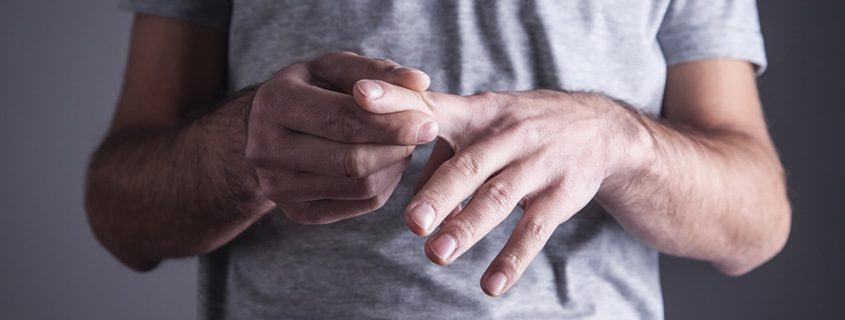6 Exercises for Osteoarthritis
Article Featured on US News
OSTEOARTHRITIS IS THE most common type of arthritis, affecting 31 million people in the U.S., says Marcy O’Koon, senior director, consumer health, Arthritis Foundation.
The degenerative joint disease commonly affects the hands, hips and knees. People with osteoarthritis often have thinning cartilage within a joint or joints. When such deterioration occurs, bones can change, she says. People with osteoarthritis may experience bone lesions or overgrowths, also known as spurs.
The disease is associated with a raft of symptoms, including:
- Pain.
- Stiffness.
- Swelling.
- Reduced function.
- Disability.
People with osteoarthritis may have difficulty doing daily tasks, such as walking, climbing stairs and lifting and holding objects. Some people may find it difficult to hold a pen.
Risk Factors
The risk factors for osteoarthritis include:
- Overuse of joints.
- Genetics.
- Being overweight.
- Advanced age.
- Injury.
Exercises for Osteoarthritis
As with other types of arthritis, there’s no cure for osteoarthritis. However, “there are things you can do to manage it,” O’Koon says. Some people with osteoarthritis can benefit from taking over-the-counter pain relief medications, such as ibuprofen or acetaminophen.
Remaining physically active is one of the most effective ways of managing osteoarthritis, says Jhankhana Jani, a physical therapist at Providence Saint John’s Health Center’s Performance Therapy Center in Santa Monica, California. Physical activity helps keeps your joints lubricated and functioning well.
Here are six exercises or types of workouts that are good for people with osteoarthritis:
- Aerobic exercises.
- Mini-squats.
- Clamshells.
- Straight leg raises.
- Bridges.
- Strength training.
1. Aerobic exercises.
The American College of Sports Medicine recommends that adults participate in at least two hours and 30 minutes of moderate intensity aerobic exercise a week. Adhering to these guidelines is a great idea for people with osteoarthritis, Jani says.
You don’t need to run a marathon to fulfill these guidelines. Brisk walking, jogging, bicycling, playing pickup tennis, soccer or basketball, swimming or doing other pool exercises are good ways to get aerobic exercise.
2. Mini-squats.
Begin by standing with your feet shoulder-width apart. You can use a stable support – like a railing or a kitchen counter – in front of you to help with balance, Jani says. Hinge at your hips, bend your knees and lower your body as though you’re sitting back in a chair.
Your body weight should be directed to your heels. Return to a standing position and repeat.
2. Clamshells.
Begin by positioning yourself on your side with your knees bent. Draw the top knee up by keeping your feet together. Return to bring your knees back together and repeat.
Be sure to keep your hips rolled forward throughout the exercise. Switch sides so you exercise both legs.
3. Straight leg raises.
Begin by lying on your back with one leg straight in front of you, perpendicular to the ground, and the other bent. Start the exercise by contracting your quadriceps muscle, which is in front of your thigh, to keep your leg straight. Then raise your leg up into the air with a straight knee. Bring your leg back down and repeat.
4. Bridges.
To start, lie on your back with your knees bent. Tighten your buttocks and abdominal muscles, then raise your buttocks 6 inches off the floor. Lower yourself and repeat.
5. Yoga.
Some types of yoga are good for osteoarthritis, says Dr. Adam Rivadeneyra, a sports medicine specialist with Hoag Orthopedic Institute in Irvine, California.
Gentle movements and stabilizing exercises that are part of some types of yoga help build balance, strength and coordination. Any type of yoga can be good for the spine, hips and knees, as long as it’s not making your symptoms worse, he says. More physically vigorous forms of the centuries-old practice, like hot yoga, which is also known as Bikram yoga, may not be appropriate for someone with osteoarthritis. Ask your health care provider which type of yoga is best for your osteoarthritis.
Look for a yoga instructor who has experience teaching people with osteoarthritis. You can call yoga studios to ask if they have instructors experienced in teaching people with the disease. Yoga teachers can help you modify your yoga practice according to your abilities.
6. Strength training.
Simple body weight exercises like lunges, planks and pushups can be helpful for people with osteoarthritis, Rivadeneyra says. “Free weights, machines and resistance bands can all be useful with the correct form,” he adds. These exercises help strengthen the muscles above and below the affected joints.
Start your training with the guidance of a physician or physical therapist to make sure specific exercises are appropriate for you. It could be helpful to consult with a personal trainer to make sure you’re using the correct form for whatever strength training you engage in.
Orthopedic & Sports Medicine Center of Oregon is an award-winning, board-certified orthopedic group located in downtown Portland Oregon. We utilize both surgical and nonsurgical means to treat musculoskeletal trauma, spine diseases, sports injuries, degenerative diseases, infections, tumors and congenital disorders.
Our mission is to return our patients back to pain-free mobility and full strength as quickly and painlessly as possible using both surgical and non-surgical orthopedic procedures.
Our expert physicians provide leading-edge, comprehensive care in the diagnosis and treatment of orthopedic conditions, including total joint replacement and sports medicine. We apply the latest state-of-the-art techniques in order to return our patients to their active lifestyle.
If you’re looking for compassionate, expert orthopedic surgeons in Portland Oregon, contact OSM today.
Phone:
503-224-8399
Address
17355 Lower Boones Ferry Rd Suite 100A
Lake Oswego, OR 97035
Hours
Monday–Friday
8:00am – 4:30pm



